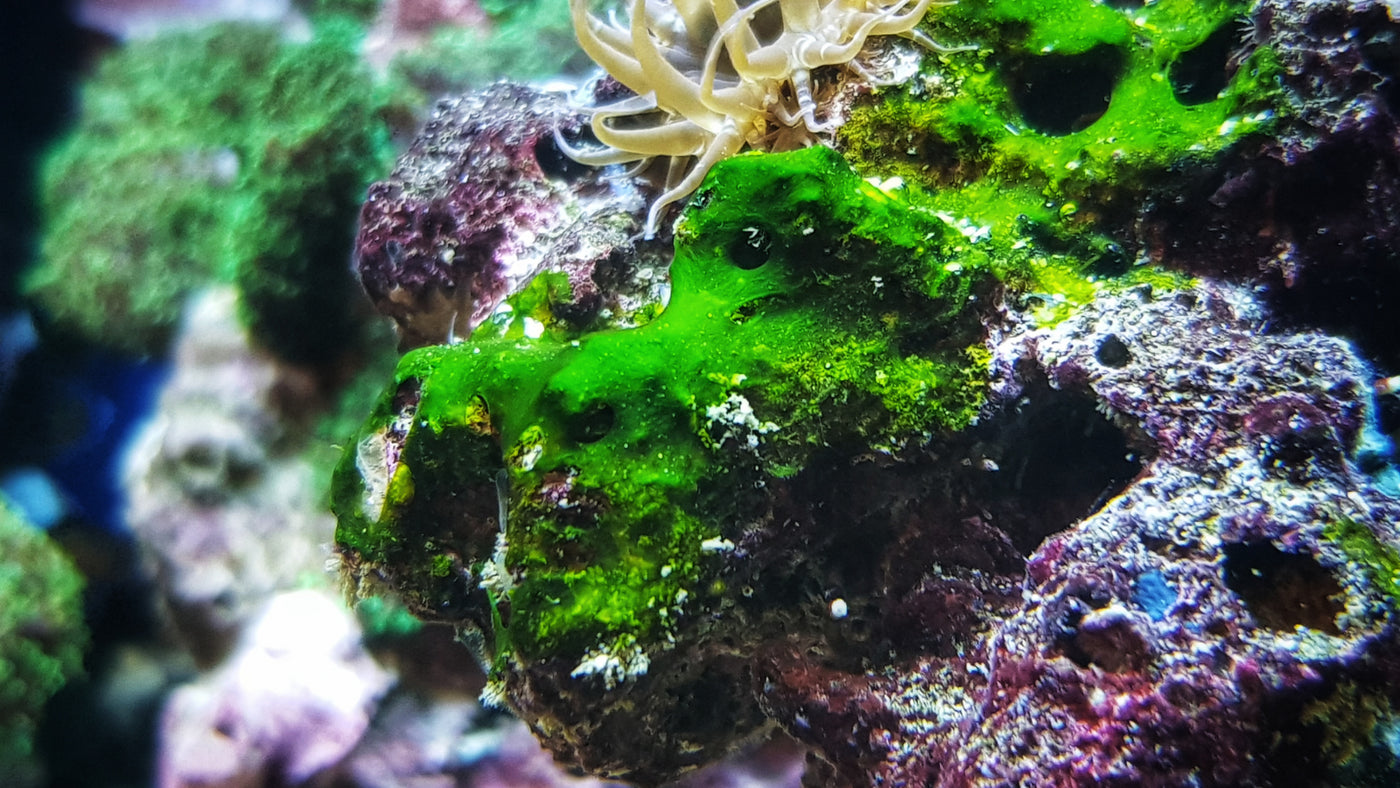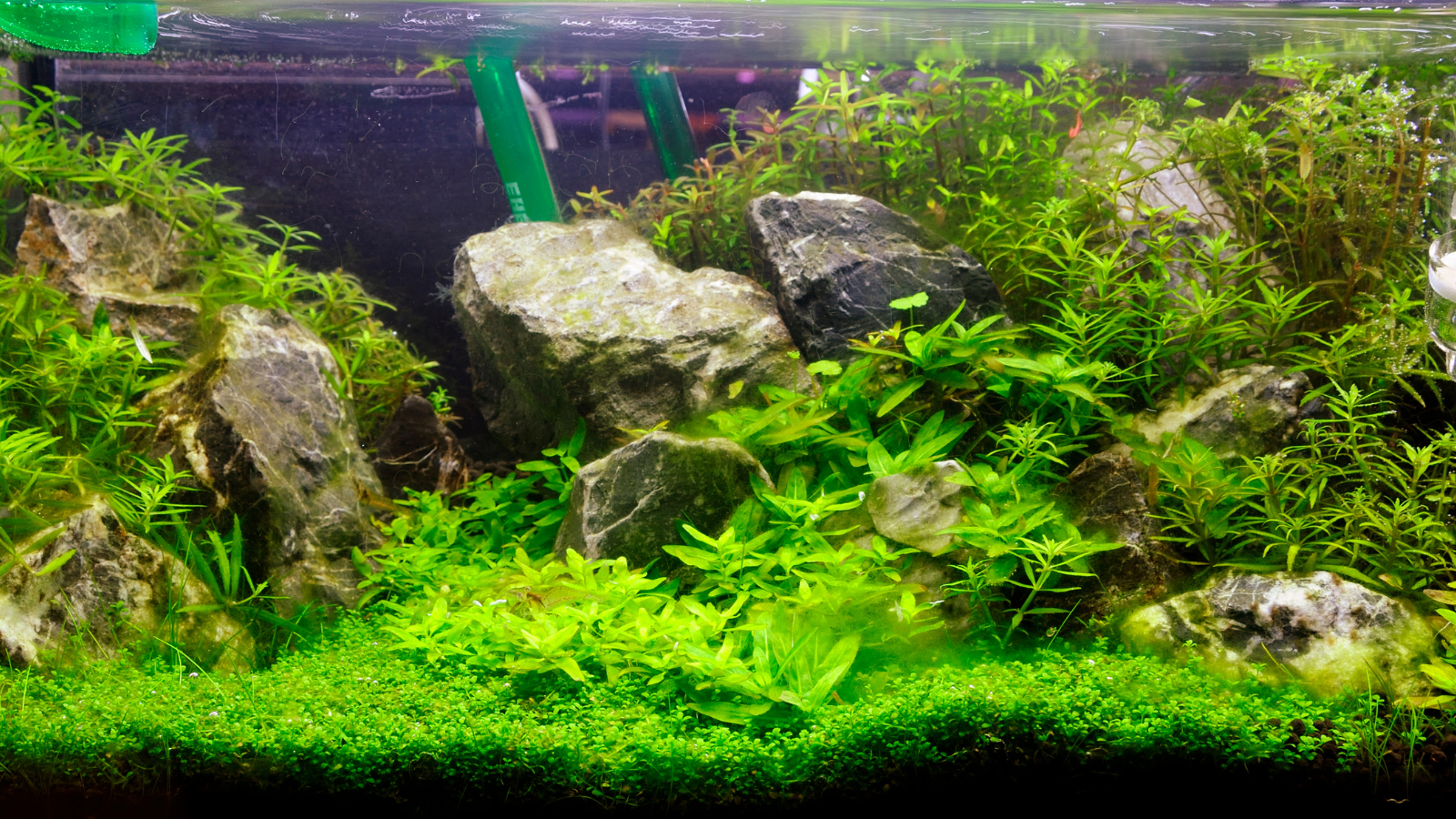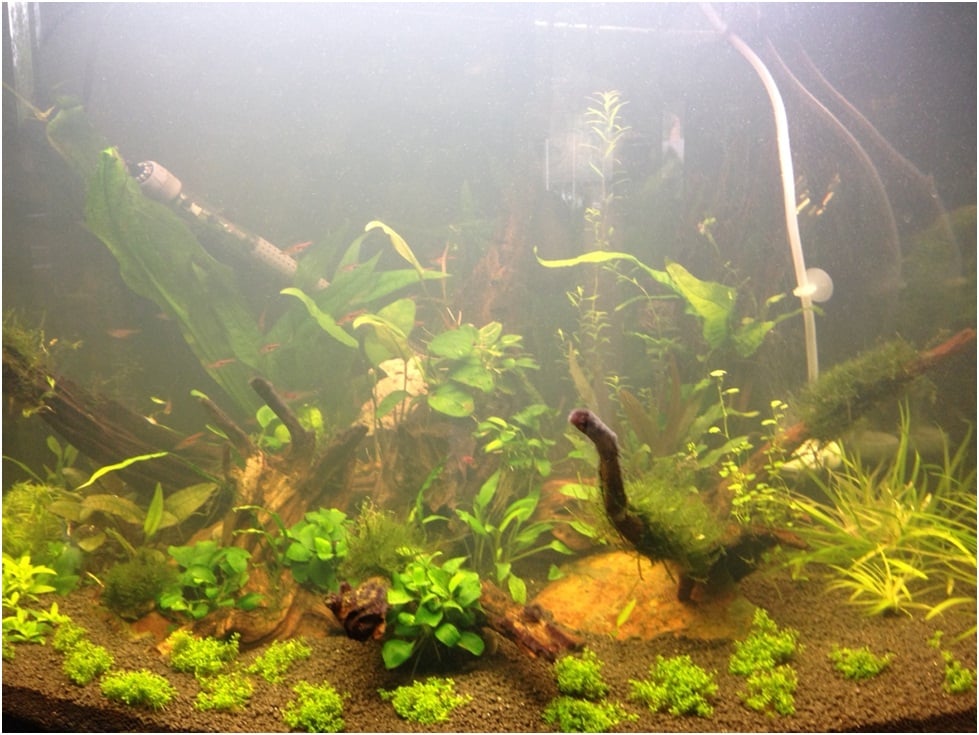
Combating Cyanobacteria in your aquarium
Cyanobacteria are commonly known as 'blue-green algae' or 'red slime alage' despite the fact they are bacteria. In natural water bodies such as rivers, lakes and oceanic waters, cyanobacteria or 'blue green algae' can release dangerous substances, such as neurotoxins which are dangerous. Their presence in the aquarium is a warning that something is out of balance. Read on to learn more about this photosynthetic bacteria.
The importance of cyanobacteria in the aquarium and the causes of its occurrence
Cyanobacteria is easy to differentiate from algae. The appearance of blue, green or red slime (in marine aquariums) coating covering wood, substrate, live rock and even live plants usually means only one thing - a cyanobacteria bloom. Their consistency is firm but soft. It disintegrates when touched. It also falls off solid elements (e.g. stones). Trapped within the slime coating are often air bubbles and an unpleasant odour. Cyanosis is a danger to the health and even the life of fish. It can also lower the oxygen content in water, which leads to hypoxia in the animals living in it. It is currently unconfirmed whether cyanobacteria inhabiting the aquarium produce any toxins. However, trying to manually remove cyanobacteria is can cause water discolouring and a notably unpleasant smell.
Leading causes of cyanobacteria in a planted aquarium
-
Poor water circulation - Dead spots in the aquarium water allows fish waste and excess nutrients (food) to gather. This is a breeding ground for bacterial growth.
-
Low oxygen levels and inadequate filtration prevent the beneficial nitrifying bacteria from doing their job. Always make sure you install a filtration system that is correct for the size of the aquarium. Regular maintenance is essential.
-
Lack of nutrients and no fertilization. The absence of a quality fertilizer in a planted tank causes a nitrogen deficiency. This effectively starves plants, causing them to rot away. This problem not only causes a Cyanobacteria bloom but can invite other problems like brown algae.
-
An imbalance between nitrogen and phosphorus when the first element is too little or similar to the second. While other macronutrients play a role, they are considered secondary.
-
Frequent water changes - by adding too much fresh water, we can remove more of the good bacteria which can cause a mature aquarium to crash and begin to cycle again. Typically, most freshwater aquariums require a 20/30% water change every 1-3 weeks. Depending on your fish tank livestock, a different routine could be required but in general, this is the normal suggestion.
How to remove cyanobacteria from planted tanks?
A Cyanobacteria bloom or 'Cyano bloom' in a planted aquarium is a big problem, so effective control should involve a combination of several methods. In aquarium shops, more specialized preparations for cyanobacteria and diatoms are available. While these "cures" take some time (up to 10 days), they do guarantee results. Look out for products called 'Blue-green slime remover' if chemical treatment is your chosen route to resolve the issue.
Alternatively, the 'black-out technique can be used. This is when the aquarium is contained in darkness for a few days. During this time, additional oxygen is advised. , but CO2 and fertilization should not be added. The lack of light will not harm the plants but can eliminate cyanobacteria or at the very least, support chemical treatment. As a preventative measure, UV lamps are used (in practice, they are better for algae). If you have a sand substrate, introduce livestock that likes to dig in it (increasing circulation and aeration). While many algae-eating snails can be kept in an aquarium, there are no volunteers for cyanobacteria other than ramshorn snails.
Algae eaters such as Amano shrimp or Ottocinclus are great at keeping on top of most algae, especially on the leaves of rooted plants. However, adding them to your planted aquarium in the hope that they will assist in dealing with a cyanobacteria bloom. As far as algae eaters go, the only one that has shown an interest in eating this green slime are Ramshorn snails. They do eat Cyanobacteria however, due to their size, you would need a lot to deal with a full-on cyanobacteria bloom.
As in many other situations, the saying "prevention is better than cure" works best for cyanobacteria. However, when harmful organisms appear, it is recommended to use several methods of combating them simultaneously. While chemistry is usually used as a last resort, it really is the best method of removing such problematic growth.


